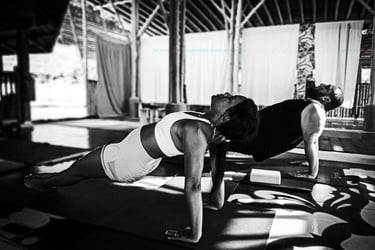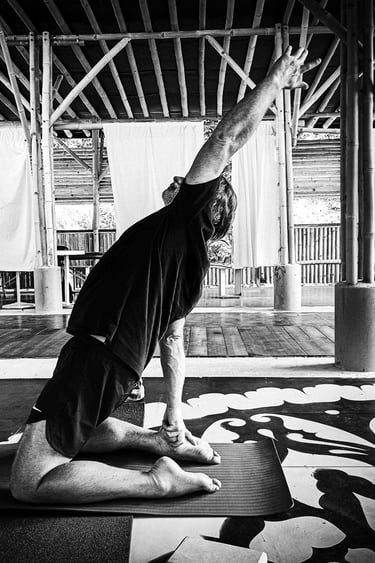Knee Pain & A Sedentary Lifestyle


Knee pain is a common issue that affects people of all ages, often without any direct trauma to the knee itself. One of the primary causes of knee discomfort can be traced back to weak muscles in the hips and legs, which play a crucial role in supporting and stabilising the knee joint.
Hip Muscles
Weak hip muscles, particularly the muscles around the buttocks, on the side of your hips (gluteus medius) and those just above the buttocks, closer to the lower back, can disrupt the proper alignment of the thigh bone (femur) during movement. When these muscles are weak, the thigh tends to rotate inward excessively, leading to added stress on the knee joint. This misalignment often results in pain on the inside of the knee or around the kneecap, a condition known as patellofemoral pain syndrome.
Thigh Muscles
The quadriceps are the key stabilisers of the knee joint. When the quadriceps are weak, it can cause the kneecap to track improperly, leading to discomfort, especially during activities that involve knee extension like walking or climbing stairs. The hamstrings also play a significant role in knee stability; if they are weak, the knee becomes more prone to instability and pain.
Calf Muscles
Although less directly involved, weak calf muscles can influence knee function by altering gait and posture. This can place extra strain on the knees over time, contributing to discomfort.
By strengthening the muscles around the hips and legs, individuals can improve alignment and support for the knee joint, ultimately reducing the risk of pain. Focused exercises that target the hip abductors, quadriceps, hamstrings, and even the calves can be beneficial in alleviating knee discomfort and preventing further issues.
When physical activity is limited, the muscles and joints that support the knee become weak and less functional, which can lead to ongoing discomfort and even injury.
Muscle Weakness
A lack of movement leads to weakened muscles, especially in the legs, hips and core. When these muscles are underdeveloped, they cannot properly support the knee joint, which increases strain on the knee and causes pain.
Joint Stiffness
Without regular movement, the joints, including the knees, become stiff. Movement is essential for maintaining joint flexibility and lubrication. When inactivity sets in, the cartilage in the knee, which cushions the joint, may begin to deteriorate, leading to stiffness and discomfort over time.
Poor Circulation
A sedentary lifestyle can also affect circulation, reducing the blood flow to muscles and joints. This slower delivery of nutrients to the knee joint hinders recovery and increases the likelihood of pain, as well as longer-term joint problems.
Weight Gain
Inactivity often leads to weight gain, which places additional stress on the knees. Weight gain places disproportionate pressure on the knees, so even a small increase can lead to considerable strain on the joints during activities like walking or climbing stairs, heightening the risk of pain and injury.
To maintain healthy knees, it’s essential to incorporate regular physical activity into your routine. Movement helps keep muscles strong, joints flexible, and the body in good alignment, while also preventing issues like weight gain and poor circulation, which can exacerbate knee pain.
Further Reading
The Body Communicates : Understanding Body Awareness
Pain : Something's Wrong!
Stiff Joints and Muscles : Hidden Clues


More Insights
